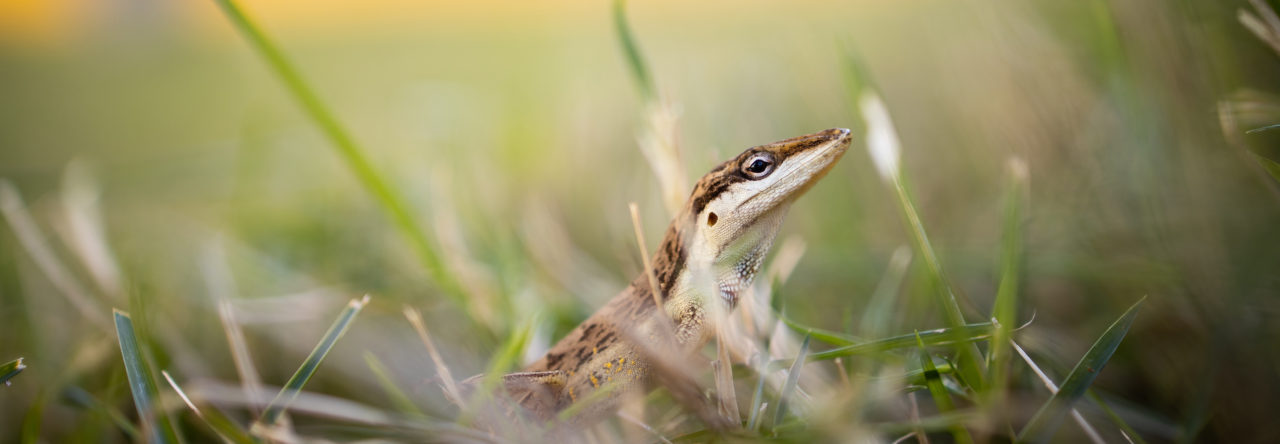Hello again from North Charleston!
We started off strong: this morning’s “Sexual Selection in Herps” session was dominated by anole talks. Bieke Vanhooydonck, from the University of Antwerp, discussed sexual dimorphism and dewlap growth in Anolis baracoae. By repeatedly measuring individuals over the course of their development into adulthood, Vanhooydonck observed a number of morphological changes. All the observed morphological characteristics showed no significant difference between males and females, with only the key exception of dewlap size. Male dewlaps were found to be larger. The development of dewlaps in the genders diverges, and the male dewlaps subsequently outgrow the female dewlaps, when lizards reach sexual maturity. An interesting and unexpected discovery made by this study was the significant decrease in male dewlap size that occurs with old age. Vanhooydonck proposed that this might be caused by loss of elasticity in skin.
Following her was Michele Johnson of Trinity University, who discussed the interplay of natural and sexual selection in Anolis sagrei and Anolis maynardi. She hypothesized that the difference in head shapes for male and female Anolis lizards may be driven by diet, male-male competition, or female choice. Looking to the particularly elongated head of A. maynardi, Michele explored the potential function implications of extreme head shape. Actively foraging A. maynardi lizards appeared to move more than “sit-and-wait strategists” A. sagrei. In A. maynardi dominance trials, Michele found that the winner of male-male territorial competitions is most commonly the male with the shorter snout (and therefore increased bite force). However, in female choice trials it was observed that females most frequently chose the male with the longer snout. Although she noted her findings are still preliminary, this leaves us with an intriguing question: if the selective forces from male competition and female choice are counteracting one another, what will ultimately determine snout length in A. maynardi populations?
A bit later, Martha Muñoz (ñote: with regard to the ñame-tag failure, it is really ñot that hard to type ñ. C’mon SICB) presented her research on behavioral and physiological adaptations to the thermal environment in the Hispaniolan cybotes group. The diverse species of lizard in this group occupy a broad range of elevation, habitat composition, and thermal environment. If Anolis lizards are not using behavior to mitigate extreme temperatures in their habitat, we might anticipate changes in physiology. No differences were observed between the study species preferred or mean field body temperatures, which implies that they are actively and purposefully thermoregulating. However, she explained that there are limits to behavioral control. What if there was no access to shade for reprieve from the heat? Or what if it was too cold to bask? From her data, Martha suggests that the cybotoids are able to evade extreme heat, but an inability to avoid extreme cold in some environments has made it advantageous to adapt a physiological tolerance to the cold.
The poster session was dotted with Anolis research as well, including such topics as A. carolinensis satellite cells and tissue regeneration. Ellie Cook, who I met while she was working with Michele Johnson in the Dominican Republic this summer, had a great poster displaying her analysis of the affect of parasitism on dewlap coloration in Anolis brevirostris. Her data show that whiter, duller dewlaps are correlated with greater ectoparasite loads. She suggests this may the result of cartenoids being diverted during parasite-instigated immune response.
This has been a fantastic first conference experience for me! I am really sorry to be leaving so soon. I have been super impressed by the Anole community’s contributions to SICB – please keep updating, guys!
















